









LETTER











LETTER
Twelve years ago, Father's Day, I took Dad out for a steak dinner—my treat. I had a brand new paycheck from my brand new job. I was a fresh college graduate, hot off the press. I didn't know it then but it would be the last one I'd spend with him before he passed away later that year, and I've missed him every day since. But as I've grown up and become a parent myself, I've started to fill that hole in my chest with gratitude.

Not everyone gets to have a great parent. And I don't mean great as in doing everything right or fair. I mean going all your life knowing that you are loved. There is such an indescribable devotion to being that type of parent, and it can't be taught or practiced. It's just there, at the core of that person from the moment you're born. My dad had that. He let me stay up late, run free with friends, and boy, did we get into it together when our opinions didn’t line up. But he'd make me a waffle breakfast with sliced strawberries between each layer in the morning, no matter what. His whole presence lit up when I came into the room. I knew I couldn't drive him away or make him love me less, despite every grey hair I put on his head. After all, it probably wasn't easy raising a teenage daughter while he was in his late 60s.
I watch my husband with our sons and know that he has that special core, too. It remains a soft place to land even when "overstimulation" is nearly painted across his face just before bedtime when every fiber of our 4-year-old is firing. He is there, faithfully, steadily, lovingly. He shows up because that's what this life asks of him. It is a job that you sign up for without having read the requirements or description. Without having any experience at all. The hours are long and putting in overtime means you're just getting started. It is forever, and even beyond that.
The feeling of being unconditionally loved lives on in the way you love others and yourself. I know when a familiar country song rattles through the truck speaker, I’m right there—10 years old, looking at Dad’s hands on the wheel. I wasn’t a chapter for him, but the whole story. That’s being a parent, a dad. Here’s to our story, Chris—Happy Father’s Day to another dad that I’m proud to stand beside and bear witness to the real thing as it unfolds.

CHELSEA LYN AGRO, EDITOR @MVLMAGAZINE
PUBLISHER
Mike Tucker | MTucker@CityLifestyle.com
PUBLISHER ASSISTANT
Amanda Tucker | Amanda.Tucker@CityLifestyle.com
EDITOR
Chelsea Lyn Agro | Chelsea.Agro@CityLifestyle.com
SOCIAL MEDIA COORDINATOR
Marla Huggins | Marla.Huggins@CityLifestyle.com
STAFF PHOTOGRAPHER
Rick Szczechowski | RSzczechowski@Gmail.com
CONTRIBUTING WRITERS
Marko Capoferri, Emma Trotter, Susie Wall
CONTRIBUTING PHOTOGRAPHER
Renske Photo
CEO Steven Schowengerdt
COO Matthew Perry
CRO Jamie Pentz
VP OF OPERATIONS Janeane Thompson
VP OF SALES Andrew Leaders
AD DESIGNER Evan Deuvall
LAYOUT DESIGNER Kelsey Ragain
QUALITY CONTROL SPECIALIST Marina Campbell


Proverbs 3:5-6





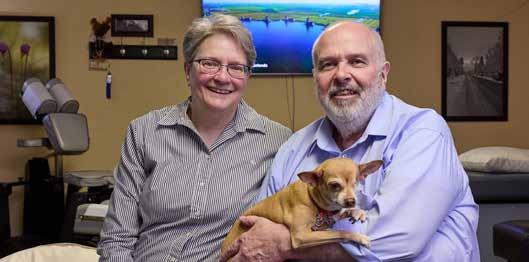
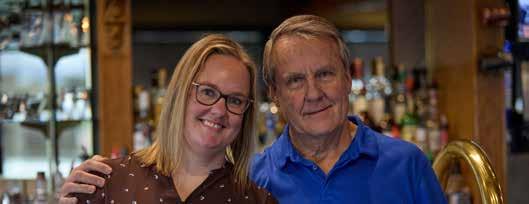
The Backbone of Missoula
Dr. Gregory Chapman of ProAdjuster Chiropractic Clinic is devoted to each patient.
Paradise Falls co-owners, a father-and-daughter duo, share how Missoula has changed and how business is really about the people behind it.
Playing His True Self
Local musician John Floridis never deviates from who he is and his music has become a Missoula staple.
Tom McLaughlin and Staci Nugent, father and daughter and co-owners of Paradise Falls, have seen Missoula change over a few decades, but they've remained a constant resource for the community to convene.





On Sunday, June 22 the Missoula Summer MADE Fair is back! Arrive anytime between 10 a.m. and 4 p.m. and browse impressive makers and their creations in an open-air space.
Have you ever heard of Asian Brush Painting (Sumi-e)? It's all about the dynamic relationship between our meditative and creative minds. This specific type of art embraces the simplicity of line. A brush painting kit and materials are provided. Class fee is $85 and takes place at the Lifelong Learning Center on Monday, June 2.
On Thursday, June 12 at 4 p.m. enjoy a night of flavor, rustic elegance, and support a cause that's close to home at the Teller Wildlife Refuge. Experience multiple courses that honor the harvest of our wild lands. Tickets are available at Rendezous.Backcountry.org/field_to_table.
















DR. GREGORY CHAPMAN OF PROADJUSTER CHIROPRACTIC CLINIC IS DEVOTED TO EACH PATIENT
ARTICLE BY SUSIE WALL | PHOTOGRAPHY BY RICK SZCZECHOWSKI
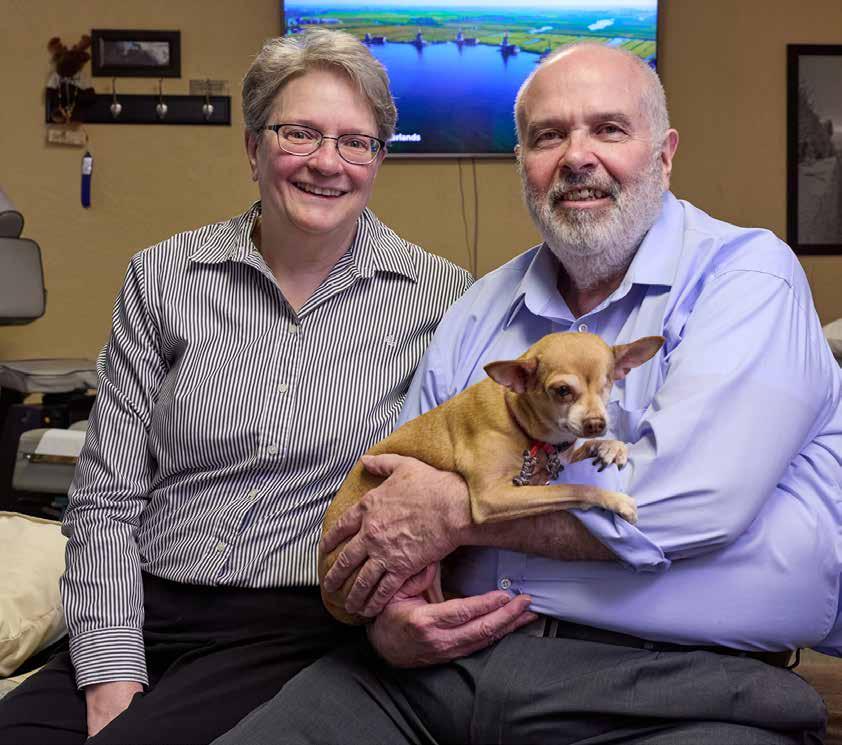
The latest technology in pain management is on full display in Dr. Gregory Chapman’s ProAdjuster Chiropractic Clinic, but it is his deep passion for helping all who walk through the door that has brought devoted patients into his office for over 40 years.
"Chiropractic isn’t dangerous, but if you think it is then that fear is real to you, and I respect that. If I can take that fear away by using a different technique, we can accomplish the same goals and have an even greater effect."
Dr. Chapman and his wife Jill moved to Missoula in 1984 upon his graduation from the National College of Chiropractic. He wasted no time opening his practice and has been a vital part of Missoula’s therapeutic medical community ever since, all while he and Jill raised an active family. His interest in the practice of chiropractic traced back to his own childhood while growing up in Minnesota. “My dad and my uncle were chiropractors. It was in our family and in our blood,” he says. “I knew I wanted to do this when I was in the seventh grade. I saw what my dad did in his office and experienced chiropractic treatment myself. It was absolutely amazing what he did. He was very talented in his field.”
Dr. Chapman chose Missoula as the place to set down roots also at an early age. When he was in high school, his class came out to Glacier National Park on a field trip. Unfortunately, he was unable to go. “I stayed home to work and missed out on the trip, so I always was intrigued by Montana. I ended up being the only one from my class who moved out here. Everyone else stayed back home,” he laughs. “We’ve been in Missoula for 41 years now and raised six children here. We just love the community and it provided an awesome environment for our kids to grow up and become contributing adults to our society.”
Throughout his lifetime, Dr. Chapman has seen the chiropractic field progress, especially as far as technological advancements, but he is aware that some people’s impression of the methods he uses can remain stuck in the past. He says, “The concept that most people have is popping and cracking bones. That’s not nearly the only thing I do. My treatments have
evolved significantly over the years that I’ve been in practice.”
As a patient of Dr. Chapman, you will take comfort in the knowledge that his main goal is to help get you through a traumatic time whether that stems from a single injury or debilitating chronic pain. He always begins with an initial consultation to discuss what is causing your complaint, how long your pain has lasted, its severity, and how it effects your daily life. “I want to know everything I can about why you’re here,” he says. “The more I know about my patients, the more I can help them. I take the time to listen and understand their problems so we can devise a plan.” This focused personal approach, along with the help of extensive cutting-edge technology like thermal scans of the spine and galvanic skin response, which indicates stress levels, helps him to know what all the nerves of the body are doing.
Dr. Chapman explains that the field of chiropractic is rooted in the philosophy that the brain controls the body, and that the only connection between the brain and body is the spinal cord and the nerves that branch out from it. Our nerves affect everything that goes on with our bodies from pain to digestive issues to mental health, so if there’s interference in the nervous system it will alter or effect how the body functions.
Overall health and wellness are Dr. Chapman’s end goals for every patient. “Half of my practice involves a series of diagnostic tests. The other half is developing and providing a treatment plan based on what we found,” he says. “I don’t like to go into long extensive treatment plans. I devise
a plan that might be only 10 or 12 treatments that last 45 minutes to an hour that are in nature more therapeutic and rehabilitative.”
Every treatment session begins with laying on a water table which helps to relaxes the muscles and prepares them for the more focused treatments. “It’s like being in a hot tub without getting wet,” says Dr. Chapman. He will then go on to use a variety of both hands-on and electronic treatments. Far Infrared Light Therapy addresses skin conditions such as acne as well as stimulates metabolism to aid in weight loss. The Magnesphere helps alleviate pain, reduces inflammation, and improves circulation. The large machine and can look intimidating at first, but even the most nervous of patients will feel relaxed as you lie back in the Magnesphere’s comfortable chair and sweet Molly the one-eyed chihuahua hops up and falls asleep in your lap during restful sessions.
One of the most impressive tools at Dr. Chapman’s disposal is the ProAdjuster 360 which measures the motion in individual joints to help him see how the joint is moving. It then sends pulses into the joint to reduce spasms and restore motion. He discovered this treatment personally when he injured his wrists. “It was a silver lining in a dark cloud in my life and helped me to continue to practice,” he says. “If I can provide relief without the popping and cracking and the twisting and turning by using technology, then I can take all the fear out of chiropractic. Chiropractic isn’t dangerous, but if you think it is then that fear is real to you, and I respect that. If I can take that fear away by using a different technique, we can accomplish the same goals and have an even greater effect.”

“I want to know everything I can about why you’re here. The more I know about my patients, the more I can help them.”
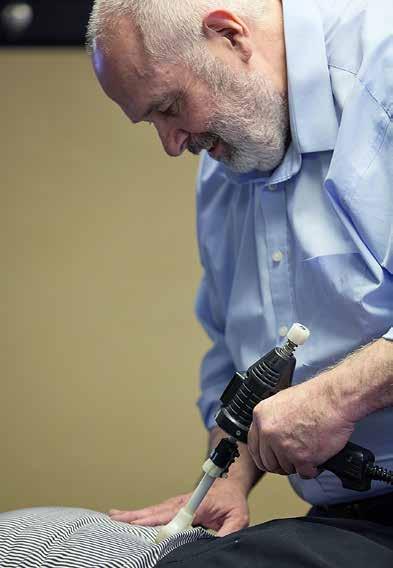






Some things are just sturdy and stand the test of time, while the world around them keeps moving. Think about the many mountain peaks surrounding Missoula, waypoints that haven’t changed all that much across millennia as countless lives have come and gone around them.
Missoula’s Paradise Falls is one such sturdy and time-tested locale. In its 30-plus years of existence Paradise Falls has been a solid rock on their stretch of Brooks Street, which wasn’t always the bustling hive of commercial activity that we see today.
As Tom McLaughlin and Staci Nugent—father and daughter and co-owners of Paradise Falls—report, the landscape around their restaurant has seen its share of hard times to contrast with the rather recent resurgence.
For a good portion of Paradise Falls’ tenure, Tom says, “there wasn’t too much out here, especially on the food end of it. It was kinda bleak, up and down. I think we’re done with all that.”
Staci, who started at Paradise Falls in 2009 as an intern helping out their then-bookkeeper, shares some of her memories of that era.
“When I started here, K-mart was across the street, then it became Big Lots, then it sat vacant for a few years,” Staci says, “so it was a rough time for us. We were kind of this little island of misfits; everybody else was kind of going down. It seems like this side of town is getting brighter in a lot of ways, so there’s a lot more traffic and people are inclined to stop, more than they were ten years ago.”
In many ways, talking to Tom and Staci is a local history lesson. Some of the names that come up are sure to ring the ears of any long-time Missoulian: Heidelhaus, Squire’s English Pub, Liberty Lanes. The latter is where Tom initially plunged his feet into what he calls “people businesses.”
“I started working back in the early ‘70s at Liberty Lanes,” Tom says. “That got me into the customer service business, being around a lot of people.”
“You’d see 150, 200 people a day coming through the doors,” he continues. “So you just got familiar with them, got to know what they did for work, and probably knew a little more about ‘em than you probably needed to [laughter]. I’ve got great, long relationships with those people; I still bowl with the same guys I bowled with for 30 years.”
Paradise Falls is, and has been, a “people business,” and Tom is the maestro at the front of the orchestra, weaving interpersonal connections and maintaining them across the years. And in the ever-shifting landscape of hospitality, every business needs an edge, a foundational ethos that holds it all together in the face of competition and uncertainty.
As Staci relates, Tom is “the face” of Paradise Falls, “and he has been the face the whole time.”
“There’s a handful of coffee clubs that come in every morning, you’ve got Bible study groups, or retirees that come in,” Staci says, “and a lot of times, some of the people that started coming here 25 years ago that are coming now, it’s kinda their only social event of the day. You can tell that this is where they come to meet people, and Tom is the one who will go and find the table and sit down with them, whether he knows them or not.”
“I think what has kept us successful is mostly Tom and being the people person he is,” she continues. “Personto-person contact and having somebody that knows your name when you walk in is a big deal.”
“Hospitality is a tough business,” Tom says, “just because it’s demanding, a lot of moving parts. It’s not for everybody, that’s for sure; you still gotta believe in yourself, and it takes time.”
For Tom, the interpersonal connections go all the way back to the basics: to the wide family he’s been lucky to grow around him.
“I gotta hand it to my wife for 42 years of sticking with me on this,” Tom says. “There was a lot of long nights, getting home late, and trying to raise a family. It’s a gift, it really is, to be in this situation; very fortunate to have the health that we have.”
“We’re very fortunate that we’ve got a great family, and great employees,” he continues. “Without them, Staci and I wouldn’t even be close to being here. I think if you treat them like your own family, they’ll respect you a little more: try to always greet them, welcome them, help them when they need it, just like our own family. I guess we’re very blessed with what we’ve got.”
Tom has some hard-won advice for those who might want to start their own business, or their own family: “Don’t take it for granted, because it usually doesn’t come to you that easy.”




“PERSON-TO-PERSON CONTACT AND HAVING SOMEBODY THAT KNOWS YOUR NAME WHEN YOU WALK IN IS A BIG DEAL.”
— TOM MCLAUGHLIN




Immerse Yourself Into Wellness
Immerse Yourself Into Wellness
Immerse Yourself Into Wellness





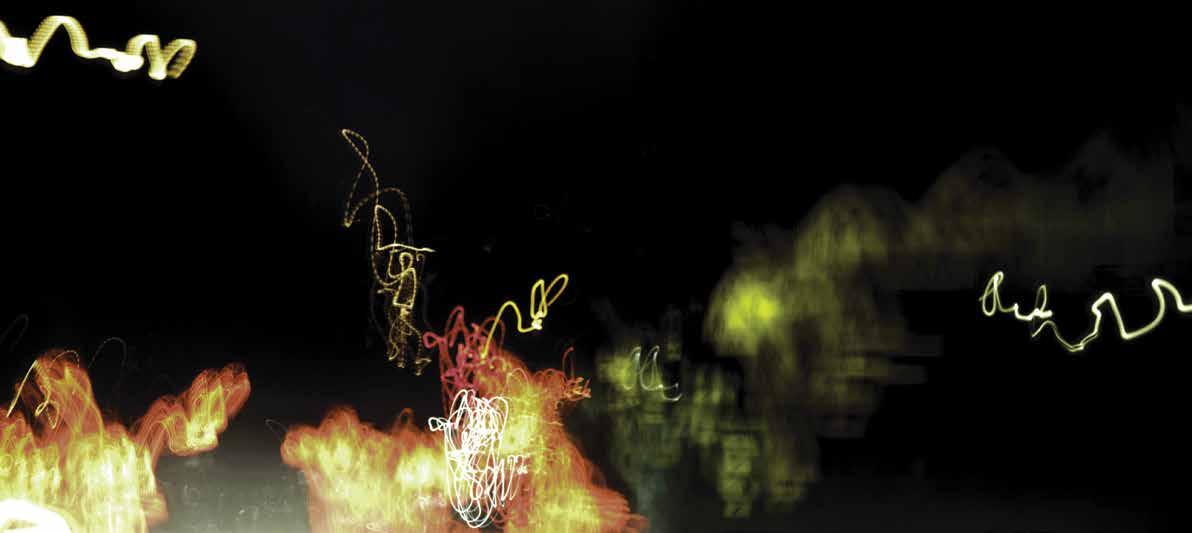







REDEFINING MEN’S HEALTH THROUGH LONGEVITY AND PERFORMANCE
BY ARIELLE WILSON
"His practice is about more than treating symptoms; it’s about engineering a life of purpose, capability, and longevity."

For too long, men’s healthcare has been reactive—treating disease only after it manifests. Dr. Payton Robertson is changing that narrative. With a deep passion for longevity medicine, he helps men not just live longer but thrive longer, focusing on healthspan rather than mere lifespan. His approach echoes the philosophy of Dr. Peter Attia’s Outlive: true longevity isn’t about staving off death but optimizing strength, resilience, and vitality for decades to come.
Dr. Robertson’s practice is built around preventative strategies that integrate cutting-edge diagnostics, metabolic optimization, and proactive interventions. He doesn’t just look at cholesterol numbers— he assesses cardiovascular risk through advanced lipid testing, VO2 max, and inflammation markers. He fine-tunes hormones, manages insulin sensitivity, and personalizes fitness and nutrition plans to keep his patients performing at their best. Beyond longevity, Dr. Robertson has extensive expertise in treating sports
injuries and chronic pain. One patient, a 52-year-old former athlete, came to him with persistent knee pain that threatened to sideline his active lifestyle. Conventional medicine had only offered NSAIDs and the prospect of surgery. Dr. Robertson took a different approach— using targeted supplementation, regenerative therapies, and movement retraining to restore function. Within months, his patient was back to hiking and playing pickup basketball, pain-free.
For men seeking more than just an absence of disease—those who want to maintain strength, cognitive sharpness, and resilience into their later years—Dr. Robertson provides the tools to make that a reality. His practice is about more than treating symptoms; it’s about engineering a life of purpose, capability, and longevity.
Aralia Health
206 South 3rd Street West
406.493.0075
AraliaHealth.com











LOCAL MUSICIAN JOHN FLORIDIS NEVER DEVIATES FROM WHO HE IS AND
HIS MUSIC HAS BECOME A MISSOULA STAPLE
John Floridis is a Missoula-based guitarist, singer-songwriter, and composer—and recipient of Arts Missoula’s 2024 “Individual Artist Award.” His music spans folk rock, blues, and solo acoustic guitar. Long-time host and producer of Montana Public Radio’s Musician’s Spotlight program, he has interviewed more than 200 musicians from all over the world. He is best known for two winter-themed albums, “December’s Quiet Joy” and “The Peaceful Season,” around which he builds annual holiday benefit concerts. But when we sit down at Draught Works, he tells me his favorite season is actually autumn.
WHY IS DRAUGHT WORKS ONE OF YOUR FAVORITE VENUES?
This spot has a feel of being a show, and the audience tends to be more tuned in. There are no screens, and I think that has a big impact. This is a spot for real flesh-and-blood engagement with three-dimensional human beings. I welcome that.
WHAT FIRST SPARKED YOUR PASSION FOR MUSIC?
I have a strong memory of an old R&B song called “Me and Mrs Jones.” There’s something about the reverb that really drew me in. It could also be hearing my parents play around on the piano, which is something people did back then. On my parents’ Zenith console, I would try to play along with Jimi Hendrix for a bit, then I’d put on Andrés Segovia, and try to play along with that. Those guys were so good, it was hard to grasp what
they were doing. An old Rolling Stones album, “Get Yer Ya-Ya’s Out!” was great but it was simpler. Keith Richards was my first guitar teacher. I could play what he played. Then eventually I would play another note and realize, that’s not the note he played, but it still works and sounds kinda cool.
WHEN YOU'RE WORKING ON A NEW SONG, WHAT DOES YOUR CREATIVE PROCESS LOOK LIKE?
I am a musician first, before anything else. Ideas musically come really quick. Lyrically it’s a different process. A lot of times what is helpful, if I can write lyrics ahead of time, and shape the lyrics into the music rather than the other way around.
YOU'VE BEEN PART OF THE LOCAL MUSIC SCENE FOR A WHILE NOW. HOW DO YOU SEE THE COMMUNITY HERE INFLUENCING YOUR MUSIC?
There was definitely a time I struggled with, do I even belong here musically? I knew people respected what I did, but I didn’t feel like I had a real niche. A lot of what changed, frankly, is places like we’re in right now. That’s where I kind of felt like, this is a setting where my music fits. Because it doesn’t fit into a convenient category. But this is who I am, this is the music that’s going to come out of me. If people like it, they like it. If they don’t like it, I’m not going to become something I’m not. That was a process for me, not an immediate thing.
ARTICLE BY EMMA TROTTER | PHOTOGRAPHY BY RICK SZCZECHOWSKI

DO YOU THINK ABOUT THE ROLE OF MASCULINITY IN YOUR MATERIAL OR YOUR PERFORMANCES?
Absolutely. I’ve always strived to have a balance between masculine and feminine energy. Not to play armchair psychiatrist, but I think that comes from having two strong, excellent parents. The message I always got as a kid was that balance between the two of them. When I’m composing I’m frequently looking for ways to get that balance. One thing I like to do is cover songs written by female writers and try to see, if I come at that with a strong masculine energy, how does the song hold up or how does it shape itself?
TELL ME ABOUT A SHOW YOU’VE PERFORMED WHERE YOU FELT LIKE YOU REALLY CONNECTED WITH THE AUDIENCE.
A recent one at Sacred Ally. There weren’t a lot of people. But the people that were there were hanging on every note, hanging on every word. One of the songs I did is called “Almost 50,” which I wrote, yes, on the verge of turning 50. And now I’m 62. A couple women came up to me afterwards who are exactly my age, talking about being 62 in 2025. That was a unique, very specific connection.
ANYTHING ELSE YOU WANT READERS TO KNOW ABOUT YOU OR YOUR MUSIC?
I’m really at a stage where I don’t know where this is all going. There’s a lot of things I’ve set out to do that I’ve done. I’m not certain which way I’m going, but I’ve never felt more confident in what I can bring to the table. What are you supposed to do when you’re in your early 60s and feel like you’re at your best, at a time when most people think about retiring? It’s an interesting dilemma.
WHERE CAN FOLKS FIND YOUR MUSIC AND FOLLOW YOU FOR UPDATES? JohnFloridis.com












The “Best Bourbon” Is Truly Up To The Individual and Occasion
ARTICLE
BY ANTHONY ADAMS
We were recently asked to suggest the Best Bourbon that was affordable and as I reflected on my list of favorites, providing a single answer wasn’t as straightforward as it appeared. Think of it like this. If we asked 100 people in our community what their favorite restaurant is—the answers would be varied based on the individual’s personal palate or even the moment you asked them in!
Here is our list of favorites that will have you covered at any price point and occasion.
Blanton’s is recognizable on sight due to the round bottle with a brass horse and jockey for a stopper. Taken from the center-cut or middle sections of the famous Warehouse H. The taste profile is sweet, with notes of citrus and oak. The creamy vanilla nose is teased with caramel and butterscotch, all underscored by familiar baking spices such as clove, nutmeg, or cinnamon.
— BlantonsBourbon.com
In a sea of cask-strength offerings, Basil Hayden’s stays true to its 80 proof roots. The high rye content of its mash bill charges the nose and palate with notes of caraway and spice, while 10 years in the barrel have added leather and an attractive nuttiness. If you aren’t looking for high proof, this is a remarkable bourbon.
— BasilHaydens.com
Pinhook pulls 150 barrels from a special lot to create this straight bourbon whiskey with a lively nose of butterscotch,
cinnamon stick, licorice, and vanilla. These aromas set the stage for a robust palate of cherry, chocolate, toasted brown sugar, and chicory. With the additional 5th year of age, what was tropical fruit transitions to darker fruit flavors and what was brighter candy is now rich and caramelized; hints of smoke now start to appear for the first time.
— PinhookBourbon.com
Eagle Rare 10 Year lives somewhat in the shadow of its 17-yearold elder sibling, but don’t let that shy you away. This is a sweet and mellow bourbon with definite signs of maturity and its orange peel and toffee aromas are a little shy, but the palate serves sturdy sweet and spice notes and a toasty finish.
— EagleRare.com
While others in Old Forester’s impressive lineup claim the hearts of bourbon geeks (such as the 1920 Prohibition Style), this bottle stands head and shoulders above everything at this proof and price point. It oozes aromatic charm and follows with a palate that is lithe but in no way lacking flavor.
— OldForester.com
Sometimes you find a $20 laying around or just need a good mixing bourbon. Benchmark Old No. 8 is made at the same distillery as Blanton’s and the ever-coveted Pappy Van Winkle! The nose bears caramel notes with a delicate stone-fruit backdrop. A robust and sturdy palate with some fine leather notes mingling with dry tobacco, a touch of oak, and a hint of dried cherries. The finish is smooth and calming.
— BuffaloTraceDistillery.com



































ARTICLE BY CASEY WEBER, TALL GRASS MEAT COMPANY
Nothing describes summer better than a good cookout! And what is a cookout without a good, quality steak and the perfect grilling recipe?
1. Thaw and acclimate the steak. For searing to occur, the proteins in steak need to be heated to at least 310°F. Tossing cold meat onto a hot grill lowers the temperature and can prevent a crust from forming, so it’s important that any frozen steaks are thawed completely before cooking.
2. Salt your steak 30-45 minutes before grilling. This causes the salt to draw moisture from within the steak up to the surface, where it dissolves the salt and creates a brine that gets reabsorbed into the steak where it breaks down tough connective tissues.
3. Oil the grate on the grill, not the steak. Use tongs and a paper towel dipped in vegetable oil to lube your grates.
4. Manage your heat well. Remember that your grill needs to be hot for your steak to get a good sear. But if it’s hot enough to cause your oil to smoke, it’s too hot.
5. Use the 60/40 rule. The best-tasting steaks are seared on both sides and cooked evenly in the middle. The simplest way to do that is to only flip your steak once. The 60/40 rule suggests that 60% of your cook time should be spent on one side, and 40% on the other.
6. Keep the lid closed. It may be tempting to peek, but trust the experts and keep it shut! Opening the lid makes your grill lose heat, which makes steaks cook unevenly.
7. Check for doneness. A meat thermometer will give you the most accurate temperature reading:
• Rare: 120°F
• Medium Rare: 130°F
• Medium: 140°F
• Medium Well: 150°F
• Well: 160°F
8. Let your steak rest. Pull your steaks from the grill once they’re cooked to 5-10 degrees below your target temperature and rest for 10-15 minutes.

Not Just a Side— Our Salads Are the Main Event!


